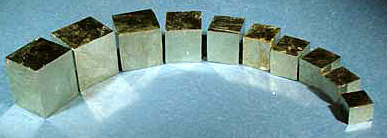
If I asked you whether you had, or knew any one who had, any pyrite jewelry, you'd probably say no. But most of us have at least one piece set with "Marcasites", usually with an oxidized silver setting and perhaps with black onyx accents. Although many years ago there was some use of true Marcasite as a gem, it has long since been replaced by its close relative, pyrite, which looks nearly identical, but is much more plentiful, stable and wearable. Along the way nobody ever bothered to change the name, so we keep on using the Marcasite misnomer. The glittery points of flashing light which make this type of jewelry sparkle come from bead set "rose cut" pyrites (flat bottom, with the crown faceted to a point).
No matter what we call it, this brassy yellow, iron sulfide mineral with its glowing metallic luster is a lovely gemstone. Its worth and prestige have been unduly "tarnished", to my mind, by the unkind epithet of "fool's gold" with which it has often been burdened. The name pyrite ("mineral of fire") is a reference to the fact that it will emit sparks when struck by a metal hammer.
Of the two metallic minerals commonly used as gemstones (hematite and pyrite) pyrite is by far, the more common and versatile. Pyrite is, in fact, the most common sulfide mineral on Earth--> it can be found in sedimentary, metamorphic and volcanic rocks and although the crystal habit is affected, it will crystallize at a variety of temperatures and pressures. Each temperature/pressure/host rock combination seems to produce a different crystal habit so that pyrite is one of the most variable minerals in that regard. Within the hobby of mineral specimen collecting, there is a healthy sized group who specialize just in the various forms of pyrite. Probably the most common of these you might have seen in rock shops are the cubes, octahedrons and "suns" (flattened disks), some of which also show themselves as lovely inclusions in transparent jewelry stones. Another place pyrite surfaces, so to speak, is as the "gold" streaks which give certain cabochon gems, such as "Apache Gold" and "Oro Verde Serpentine" an appealing glimmer.

Besides masquerading as Marascite and starring as gem inclusions, pyrite also "pyritizes" fossils. Most commonly we see fossil ammonites whose shell minerals have been replaced with the metallic yellow pyrite or its oxidized iridescent form. These dual productions of the forces of biology and geology, although quite inexpensive, are among the loveliest objects of Nature.

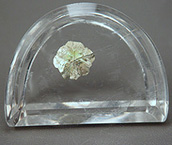
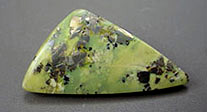
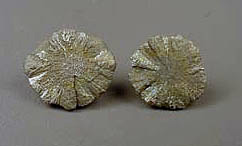
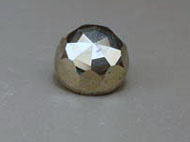
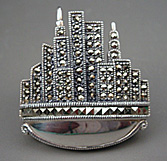
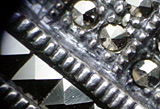
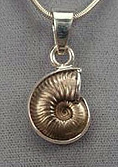
Pyrite reaches its greatest value in its various crystal forms as mineral specimens. Its value when used as a gem has generally been rather modest. Well pyritized fossils are admired, and may be even more valued when naturally oxidized to an iridescent finish. As an inclusion, it is the crystal habit which is on display, so look for specimens with distinctive and clearly visible pyrites. In jewelry, the brassy yellow color and strong metallic luster recommend this gem, so well polished specimens, with no matrix or inclusions, are the most sought after.